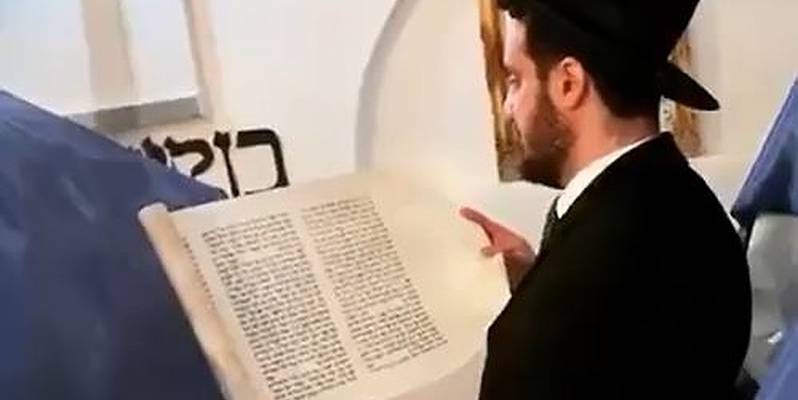As praying at the Tombs of holy people is a Jewish practice, there is much discussion as to where Mordechai and Esther are buried.
By Rabbi Ari Enkin, Rabbinic Director, United with Israel
We will soon celebrate the holiday of Purim, whose story is described in the Book of Esther. The heroes of the story are, of course, Mordechai and Esther, who foiled Haman’s evil plot to kill the Jews.
As praying at the Tombs of holy people is a Jewish practice, there is much discussion as to where Mordechai and Esther are buried for those who wish to vist their grave. According to one account, they are buried in Iran, where they lived, and according to another, their bodies were brought to Israel for burial. There are other views as well. Let’s take a look.
According to Iranian Jewish tradition, Mordechai and Esther are buried in the city of Hamadan in Iran. Somewhere off the city center one will find a mausoleum that was built in the 15th century, although the site is already mentioned at least 500 years earlier in the diary of medieval Jewish traveler Benjamin of Tudela. He also mentions that the tomb of Mordechai and Esther is adjacent to a synagogue. Perhaps there was once a synagogue at that site. This is very possible, as the Jewish population in the days of Benjamin of Tudela was well over 30,000. Today, there are no known Jews living in Hamadan, although a few families likely remain. There remains an ad hoc prayer room/synagogue in the compound.
Other famous records of pilgrimage to the tomb include the account of Romanian Jewish historian J.J. Benjamin in 1850. He writes that there were three synagogues in Hamadan that were used by the town’s 500 Jewish families. According to Benjamin, the tombs are in a building where pilgrimages are made about once a month. On Purim, the reading of the Megillah, the Book of Esther was held there. Also, in late 19th century we have the account of Rabbi Yehiel Fischel Castelman, who describes the tomb as being beautiful and magnificent with a tradition that it was built by Cyrus, the son of Esther. Other travelers have documented the site, as well.
According to a German-Jewish archaeologist by the name of Ernst Herzfeld, the site is cannot be the burial place of Mordechai and Esther. He holds it is the Tomb of Shushandukht, daughter of the late antique Exilarch Huna bar Nathan, wife of Yazdegerd I, and mother of Bahram V. She is credited with establishing a Jewish community in the city of Isfahan. Herzfeld argues that Mordechai and Esther are buried in Susa, ostensibly the city in which the story of Esther took place.
Another view is that the Hamdan site is the tomb of Shushandukht, Jewish consort of the Sasanian king Yazdegerd. Yes, this is a different Shushandukht from the one just mentioned.
Regardless of who is truly buried there, it seems that there were also other prominent people, members of the Jewish community, who were buried in or adjacent to the site as well.
As mentioned, there is a tradition that Mordechai and Esther are buried in northern Israel in the city of Bar’am. It is extremely unlikely, however, if not impossible, that the bodies of Mordechai and Esther were brought from Iran to Israel in those years. And even if they were, why would they be buried in an otherwise unknown and unimportant place such as Bar’am? Even the unlikely assertion that Maimonides, who died in Egypt, was taken for burial to Israel puts him as being buried in the holy, tomb-filled city of Tiberias. It is almost certain that Mordechai and Esther were buried in Iran.
Iran, Israel, Hamadan or Susa, it doesn’t really matter where they are buried. As the Megila (9:28) itself tells us: “And these days of Purim shall not pass from among the Jews, and their memory shall not be forgotten from among their descendants.” It is their deeds and inspiration that matter most, not where they’re buried!
